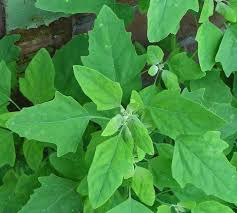WHAT IS WEEDS-CHARACTERISTIC, CLASSIFICATION & CONTROL
DEFINITION
Weed is unwanted and undesirable plants which interfere with a variety of human activities through utilization of land and water resources. In agriculture, weed is grown in association with crops and snatches major parts of water, light, nutrients, space and CO2 available to the crops, providing hosts and vectors for plant pathogens, giving them opportunity to infect and degrade the quality of the desired plants. As a result due to competition with crop, production of crops is affected. Therefore control of weed is important in agriculture.
In india about 33% of loss is caused by weeds.
CHARACTERISTICS OF WEED
- Unwanted & undesirable plant
- A plant in the wrong place
- Extremely noxious, useless or poisonous plant
- Interfere with a variety of human activities through utilization of land and water resources.
Whether a plant is weed or Not– A weed is a plant considered undesirable in a particular situation. Thus, whether a plant is weed or not depends on characteristics and habit of plant, their relative position and their time of occurrence. Many plants that is regarded as weeds are also grown in gardens and other cultivated settings, in that case they are sometimes called beneficial weeds.
CLASSIFICATION OF WEED
Plants often considered being weed can be classified on the basis of their site of predominance, growing season, dependence on host and others criteria. Some major classification is described here-
- Based on site of predominance-
- Obligate weeds- such weeds are grown in association with man and his agriculture and never found in wild form, e.g. Chenopodium, Anagallis
- Facultative weeds- such weeds are found in wild form as well as in agriculture, e.g. Argemone mexicana (Satyanashi), Euphorbia hirta.
- On the basis of growing season-
- Kharif weeds- g. Amaranthus viridis, Cypperus rotundus etc.
- Rabi weeds-g. Anagallis arvensis, Chenopodium album etc.

- On the basis of dependence on Host-
- Total/Holo Root parasite- A parasite that attaches to the host root g. Orobanche. This parasite is mostly found on solanaceous plants like tobacco, potato, chilli, brinjal etc.
- Total/Holo Stem parasite- A parasite that attaches to the host stem, e.g. Cuscuta.
- Semi Root parasite-g. Striga, found on sorghum, maize, sugarcane, sunflower etc.
- Semi Stem parasite-g. Loranthus
Parasite: A parasite is an organism that lives in another organism, called the host, and often harms it. It depends on its host for survival
- Other types-
- Relative weed- Plants of same crop but other variety in the field, e.g. Rice in wheat field.
- Mimicry weeds- such weeds are similar in outer appearance with the crop, e.g. Phalaris in wheat field.
- Noxious weed- such weeds are undesirable and extremely noxious or poisonous, e.g. Parthenium.
- Volunteer weed- Growing of plant in main crop due to seed shading from the previous sown crop.
- Rogue- the off type crop variety in the field of certain crop variety.
CONTROL MEASURES
- Physical/Mechanical Control-
- Manual removal or hand weeding and hoeing
- Tillage practices like summer ploughing, intercultural ploghing etc. which uproots the weeds.
- Thermal treatment like soil solarization, flame weeding etc.
- mulching and covering
- Cultural Methods-
- Crop rotation
- Buried drip irrigation
- Summer fallowing
- Use of smother crops (crops that suppress population and growth of weeds by providing dense foliage and quick growing ability e.g. cowpea)
- Biological Methods-
- Use of Biological control agents
- Use of Bio herbicides
- Use of grazing animals like sheep goat etc.
- Protection of natural predators like ground beetles and small vertebrates, can substantially contribute to the weed regulation by removing weed seeds from the soil surface.
- Chemical Control- through the use of different type of organic (Sulfur) and inorganic herbicides.
Herbicides– weed control can be achieved by the use of herbicides. Selective herbicides kill certain targets while leaving the desired crop relatively unharmed. Some of these act by interfering with the growth of the weed. Herbicides are generally classified as follows:
- Contact herbicides destroy only plant tissue that contacts the herbicide. Generally, these are the fastest-acting herbicides, e.g. Paraquat, Diaquat.
- Systemic herbicides are foliar-applied, move within the weed either through xylem or phloem and affect the whole system like photosynthesis and respiration. Glyphosate is currently the most used systemic herbicide.
- Soil-borne herbicides are applied to the soil and are taken up by the roots of the target plant.
- Pre-emergent herbicides are applied to the soil and prevent germination or early growth of weed seeds, e.g. 2, 4-D, Butachlor, Isoproturon etc.
- Post-emergent applied after the emergence of weed, e.g. 2, 4-D, Propanil, Paraquat etc.
Frequently Asked Question (FAQ)
A substance which reduces toxicity of a specific herbicide to the crop is called?
Safener.
In india herbicide resistant was 1st reported in crop:
Wheat.
Parthenium was successfully controlled by:
Zygogramma bicolorata.
Indian society of weed science is sitated at?
Jabalpur.
Read more..
Herbicide- Classification, Formulations & Application
NITROGEN FIXATION-DEFINITION, PROCESS& TYPES
CASH CROPS-DEFINITION & EXAMPLE
STRIP CROPPING-DEFINITION,USE&TYPES
SUSTAINABLE AGRICULTURE-DEFINITION & IMPORTANCE
WATER HARVESTING-DEFINITION,TYPES & ADVANTAGESHUMUS MEANING- COMPOSITION & BENEFITS
CROPPING PATTERN-CROPPING SYSTEM
AGRICULTURE IN INDIA: Development & Present Scenario
SOIL TYPES IN INDIA: FEATURES
WHAT IS SOIL EROSION- TYPES & MECHANISM
SOIL PROFILE- DIFFERENT HORIZONS
SOIL STRUCTURE-DEFINITION,TYPES & IMPACT
SOIL TEXTURE- CLASSIFICATION & INFLUENCE
SOIL HEALTH CARD-AIM & BENEFITS